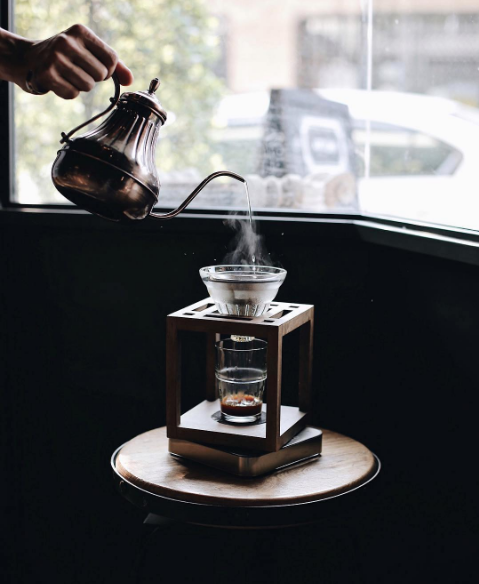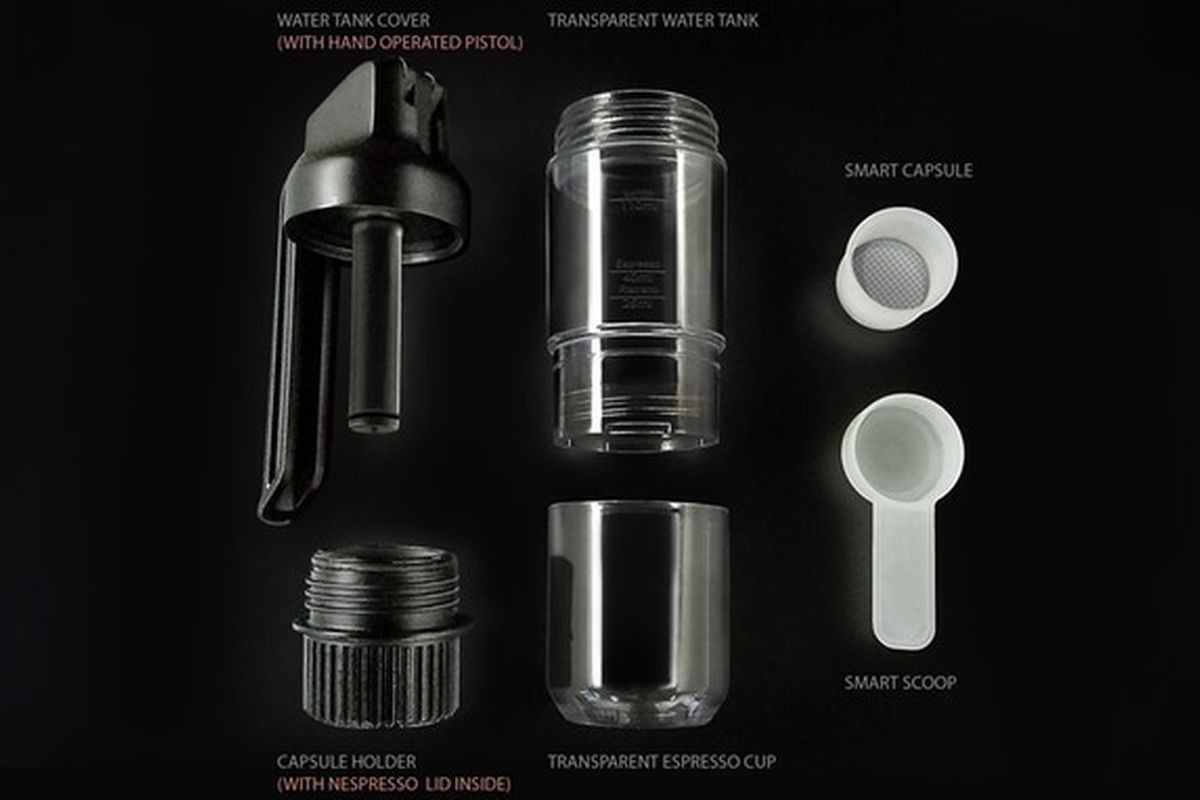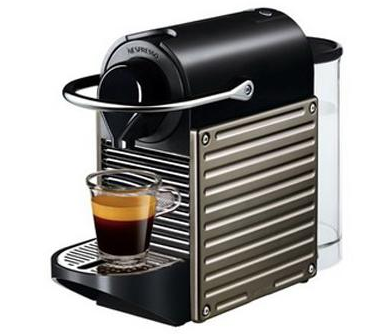The selection, analysis and use of hand-brewed coffee utensils
Follow the caf é (Wechat official account vdailycom) and found that Beautiful Cafe opened a small shop of its own.
Coffee beans are ground, weighed, hand-washed, filtered, and a cup of coffee appears in front of you.
This is not a movie plot, nor is it a scene that can only be seen in a coffee shop. Hand-made coffee is not so far away. If you have mastered the appropriate production method, you may find that it is not so difficult to make a delicious cup of coffee at home.
When it comes to hand-brewing coffee, we should also thank Benz Merita, a German housewife, who invented the coffee follicle method more than 100 years ago and rewrote the history of coffee drinking in Germany and the world. The world's first follicular coffee cup was born on June 20, 1908.

In fact, hand-brewing coffee is more like a ritual than other forms of coffee brewing. Focus on the brewing of coffee, as if time would stand still in the whole process, we avoid time and use our senses to feel that beans are crushed into powder and blend with water, and the coffee liquid extracted by wonderful chemical reactions is like an evolution of life.
In the early morning, if you can prepare a big breakfast for yourself and make a cup of delicious coffee, I believe the good mood of the day will be lit up!
Test-what kind of hand flushing pot is the best?
Over the past few years, hand-brewed coffee seems to have died, but I still want to briefly compare some of the most popular methods of making coffee by hand.
I have always liked hand-brewed coffee. Batch brewed coffee is of stable quality and is generally more fully extracted, much better than other traditional drip-filtered coffee. However, this is not suitable for family baristas, cafes or restaurants with a daily turnover of less than 100 cups, or just cafes that sell expensive coffee.
This time, let's take a test to see which kind of hand pot is the best.
In my opinion, hand pots can be roughly divided into the following categories: conical pots (such as V60, Melitta), flat-bottomed pots (such as Kalita), and "soak-release" pots (such as Clever) each has its own advantages and disadvantages.
Conical pot (V60, Melitta, etc.)
The biggest advantage of the tapered pot is that when the filter bowl is the right size, the barista can quickly pour in the remaining hot water at one time after pre-brewing. Compared with pouring hot water in stages, pouring water at one time can ensure the temperature of the water and avoid the sharp taste of coffee.
I have tasted coffee made by pouring water periodically in a V60 pot. The coffee tastes sour because the water temperature is too low during the extraction process. People used to like sour coffee, but I personally don't agree. You can like sour coffee, but don't despise it because other coffees are not sour enough.
Many baristas have complained to me that customers don't like sour coffee, and they also try to "educate" these customers. However, customers don't like it because the coffee is really sour! Bright, red wine-like sour taste is good, but no one will like the sour taste!
Flat bottom pot (Kalita)
The greatest advantage of Kalita is that its extraction is very uniform. However, it is relatively small, only a small amount of coffee can be made at a time, and water should be poured periodically. Of course, this problem is also a common problem faced by other small hand pots.
Personally, I think there is a gap in the folding filter paper in the Kalita coffee pot, which will leave some coffee powder when brewing coffee. I heard that there is a kind of seamless filter paper now, but I have never seen it.
Soak-release pot (Clever)
I would like to see more cafes choose "soak-release" pots such as Clever. Although I personally prefer V60 and Kalita, Clever is really easy to use.
The method of operation is as follows:
1. Choose the right proportion of coffee powder and water.
two。 Pour 94 ℃ ~ 95 ℃ hot water to make sure all coffee powder is soaked quickly.
3. Pour all the water into it and stir slightly.
4. Close the lid.
5. Open the lid after the customized time (2 or 3 minutes), stir to make sure there is no coffee powder glued to the filter paper, and then place the coffee pot on the coffee cup to allow the coffee liquid to flow into the cup.
Yes, it's that simple! Compared with other hand pots, Clever is more like a soaking pot, so there is no need for pre-brewing. Even a novice, with a little training, can make more than 80 points of coffee in 5 minutes with reference to the proportioned time, water temperature, powder weight and grinding parameters. By contrast, I can't remember the last time I drank more than 80 points of hand-brewed coffee.
About the coffee.
Recently, cafes advocate lightly roasted coffee. First of all, lightly roasted coffee contains more caffeine because of its shorter roasting process. Secondly, the exquisite taste of coffee itself is perfectly preserved, thus comprehensively enhancing the sensory experience of customers.
Here are some of the most common types of baking:
➊ Cinnamon (light baking):
Coffee is very lightly roasted. Although it is called "Cinnamon (cinnamon roasting)", there is no cinnamon in the coffee, and there is no cinnamon flavor, but the color is similar to cinnamon.
➋ City (medium baking):
Coffee beans go through an explosion. The bursting of coffee is due to the formation of water vapor after heating, which eventually burst the bean body. The temperature of "first explosion" is about 205 ℃. Medium roasted coffee is the most common type of roasting in the third Wave Cafe. On this basis, some people will slightly extend the baking time to make "City+", slightly more than medium baking.
➌ Full City (Deep Baking):
Coffee goes through another burst after the "first explosion", which is called the "second explosion". On this basis, there is a deeper "Full City+". Coffee has lower acidity, higher solubility, more mellow taste and stronger flavor.
➍ traditional continental baking:
This kind of baking belongs to the old-fashioned way of baking beans, which is almost out of date. The coffee beans are roasted until the grease seeps out, and the smell of the coffee is so smoky that the taste of the coffee itself is almost completely erased. Some people call it "Vienna / Italian / French / Spanish" baking.
➎ single product vs assembly
You often hear baristas ask you, "do you want a single product or a mix?" What on earth does that mean? Single coffee is a kind of coffee produced in the same plantation or the same producing area in a particular country of origin, treated in the same way and with a single bean seed. Simply put, all coffee beans are exactly the same. Blending is made from a mixture of two or more coffee beans.
Professional vocabulary of coffee
What is "espresso"? What is the "handle"? Here are some common professional words:
➊ espresso (Ristretto):
An espresso version of espresso, which is sweeter and more acidic.
➋ long cup Italian concentrate (Lungo):
Espresso, which takes longer to make, has a stronger nutty flavor, but if overextracted, it will have a wood flavor.
➌ handle (Portafilter):
A device used to load powder and install on a coffee machine.
➍ powder quantity (Dose):
The amount of coffee powder put into the handle.
➎ output (Yield):
The net weight of the extracted coffee.
➏ hand flush (Pour Over):
Fresh, hand-brewed coffee is completely different from the shoddy coffee made by drip filter in the past, and it is one of the best ways to enjoy the delicious coffee.
Important Notice :
前街咖啡 FrontStreet Coffee has moved to new addredd:
FrontStreet Coffee Address: 315,Donghua East Road,GuangZhou
Tel:020 38364473
- Prev

New artifact | addicted to coffee? Simpresso allows you to enjoy fresh coffee when you go out.
Professional baristas Please follow the Coffee Workshop (Wechat official account cafe_style) Simpresso is a portable coffee machine with a simple appearance and the same size as an insulation cup. As long as you put the coffee powder bought or ground by yourself into the accompanying wisdom capsule, or directly use Nestle Nespresso coffee capsule and press it when you plan to have a cup of coffee, you can make coffee now. Modern fake
- Next

Introduction of a good capsule Coffee Machine
Following Cafe (official Wechat account vdailycom) found that the capsule coffee machine is a kind of coffee machine that makes the operation of extracting coffee more simple and convenient. When operating the machine, the coffee capsule is put into the capsule bin and the coffee can be extracted with one key. compared with the semi-automatic coffee machine and the full-automatic coffee machine with coffee powder, the operation is very simple. Nestle
Related
- What is the Philharmonic pressure? How to use Philharmonic pressure to make delicious coffee
- Why does a hand grinder have more fine powder than an electric grinder?
- In addition to the hot mom, what is the difference between the versions of EK43 | ditting and Mahdi ek43?
- What kind of equipment do you need to make coffee by hand? Introduction to novice starter cooking equipment tools
- Espresso needs to be ground how thick and thin scale entry Italian Coffee Machine Bean Grinder investigation and Grinding course
- How much does it cost to open a small private cafe? How much does it cost to learn coffee? How to operate it?
- The difference between the flavor characteristics of hand-brewed coffee and coffee maker is hand-brewed coffee really better than coffee maker? Can I use a coffee machine to make coffee beans by hand?
- The difference between 01 and 02 of hario v60 filter cup what is the difference between 01 and 02 filter cup opening and cooking flavor
- What's the difference between the smart cup and the French kettle? Which is better, the French kettle or the Smart Cup?
- What's the difference between a smart cup and a V60 filter cup? The difference between the taste of smart cup and hand-brewed coffee

